Does HDMI Support 165Hz? Refresh Rate Capabilities of Different HDMI Versions
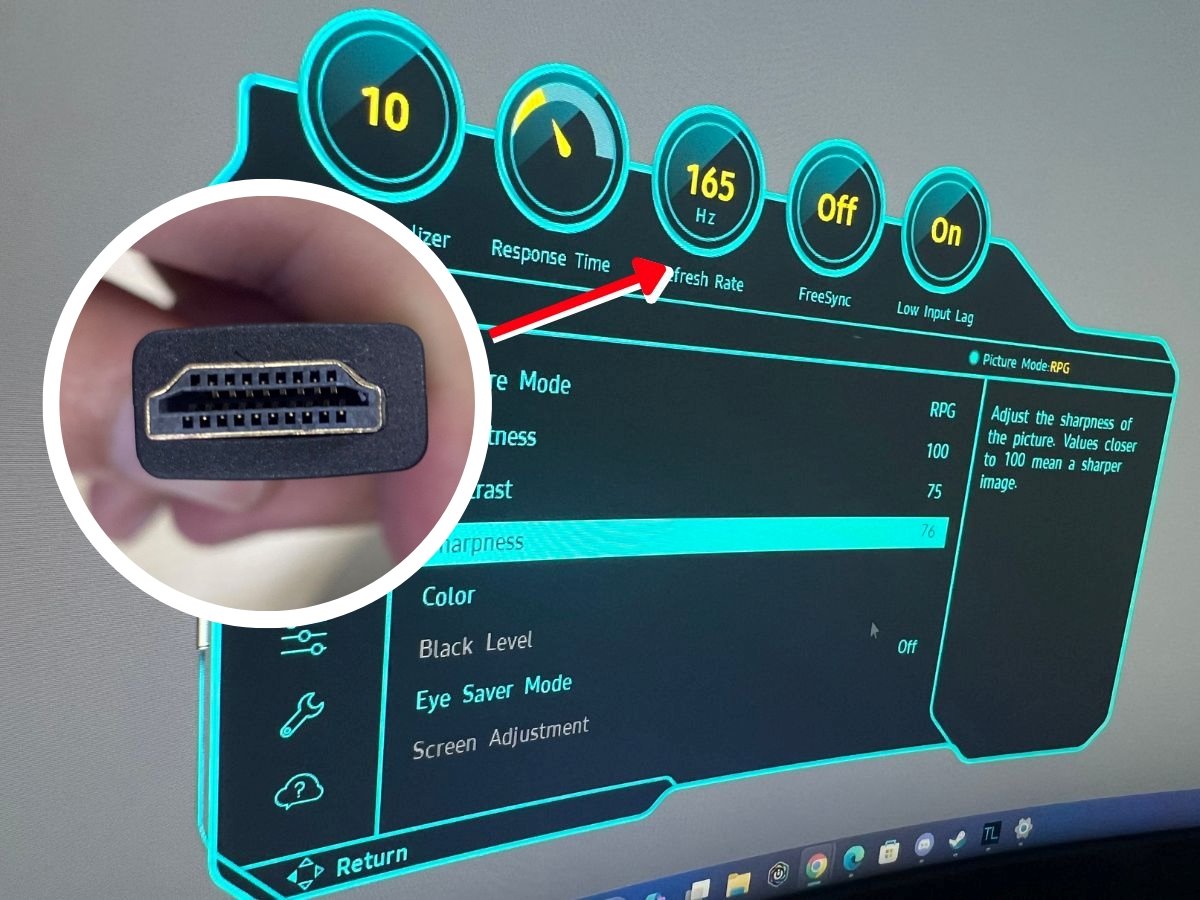
What To Know
- HDMI cables from version 1.4 and newer, including versions 2.0 and 2.1, support a 165Hz refresh rate.
- To identify the version of an HDMI cable, check for labels like “High-Speed HDMI” for HDMI 1.4, and “Premium High-Speed HDMI” for HDMI 2.0, or inspect the original packaging.
- For 165Hz playback, you need a compatible HDMI cable (minimum HDMI 1.4), a monitor capable of 165Hz, and a graphics card that supports this refresh rate, like the RTX 3060Ti.
In this article, we’ll explore whether HDMI can support a 165Hz refresh rate and delve into setting up a monitor for 165Hz playback using an HDMI cable.
Keep reading to uncover more insights on this subject.
Quick Navigation
What HDMI Version Supports a 165Hz Refresh Rate?
To view content at a 165Hz refresh rate on your monitor, you’ll need an HDMI cable that’s at least version 1.4.
However, HDMI 1.4 has its limits; it can only go up to Full HD resolution, which is 1920×1080 pixels.
That’s pretty clear, but not the clearest possible.
If you’re looking for something even sharper, the newer HDMI versions, such as HDMI 2.0 and 2.1, are what you need.
These versions not only support a 165Hz refresh rate but also work with higher resolutions, such as 2K or 4K.
This means you get a much clearer and more detailed picture on your screen.
But there’s something important to remember: the high refresh rate of 165Hz is mainly for PCs and laptops.
If you’re a console gamer, using the latest PlayStation 5 or Xbox Series X/S, you won’t be able to reach 165Hz.
These game consoles are currently capped at a 120Hz refresh rate. So, if you’re using these consoles, you won’t fully experience the smoothness of 165Hz.
To sum it up, here’s what each HDMI version can do:
| HDMI version | Maximum supported resolution at 165Hz |
| HDMI 1.4 | 1920×1080 (FHD) |
| HDMI 2.0 | 2560×1440 (2K) |
| HDMI 2.1 | 3840×2160 (4K) |
How to Identify the HDMI Version of Your Cable
Figuring out which HDMI cable version you have is pretty important, especially if you want to enjoy super smooth videos or games at a 165Hz refresh rate.
Here’s how you can easily find out what version your HDMI cable is:
1. Look for labels on the HDMI cable.
The easiest way to know your HDMI cable’s version is by checking for labels right on the cable itself.
For instance, if you see “High-Speed HDMI” on the cable, it means you’ve got an HDMI 1.4 version.
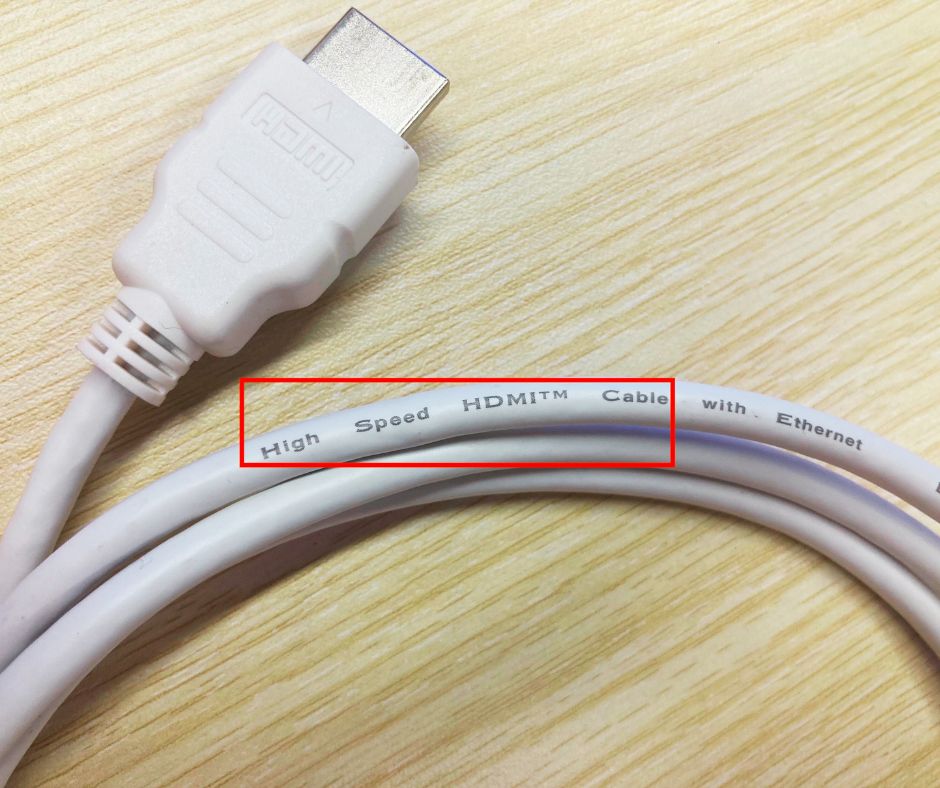
If the label says “Premium High-Speed HDMI,” then your cable is an HDMI 2.0 version.
And for the “Ultra High-Speed HDMI” label, that’s a cable with the HDMI 2.1 version.
2. Check the original packaging or manual.
If you still have the box or manual that came with your HDMI cable, that’s great!
Manufacturers often list the cable specifications on these.
So, a quick look there can give you the answer you’re looking for.
3. Test the resolution and refresh rate on your computer.
Another way to check is by seeing the maximum resolution and refresh rate your PC setup can handle.
This method might be a bit more technical, but it’s pretty effective.
If you’re curious about how to do this, we have a detailed article that walks you through the process.
This can help you figure out whether your cable is up to the task for high-resolution and high-refresh-rate displays.
How To Set Up a Monitor for 165Hz Playback With an HDMI Cable
To enjoy a smooth 165Hz playback on your monitor using an HDMI cable, you’ll need to have the right setup. This includes three key components:
- An HDMI cable that supports 165Hz.
- A monitor designed for 165Hz performance.
- A graphics card with the capability to handle 165Hz.
1. An HDMI Cable That Supports 165Hz
First of all, you need an HDMI cable that can support a 165Hz refresh rate.
Not all HDMI cables can do this, so it’s important to pick the right one.
An HDMI 1.4 cable will work, but for the best quality, you might want to go for the latest HDMI 2.1 cable.
A good example is the Highwings HDMI cable.
- Top Technology----8K@60HZ: This 8K Ultra High Speed HDMI Cable uses the most cutting-edge...
- Upgrade Revolution: Highwings Ultra High Speed HDMI Cable supports 48Gbps (6GB/s) which can will no...
- For Game Enthusiasts: This 8K Ultra High Speed HDMI Cable can achieve a super smooth picture of...
(Paid Link.)
Also, remember that shorter cables are usually better because they help avoid any loss in signal quality.
2. A Monitor Designed for 165Hz Performance
Next, you need a monitor that’s built for high refresh rates like 165Hz.
Gaming monitors are often a perfect choice because they’re designed to handle much higher refresh rates than the typical 60Hz of regular monitors.
Take, for instance, the TUF Gaming VG249Q1R monitor from Asus or Samsung 34” Odyssey – it’s a solid choice.
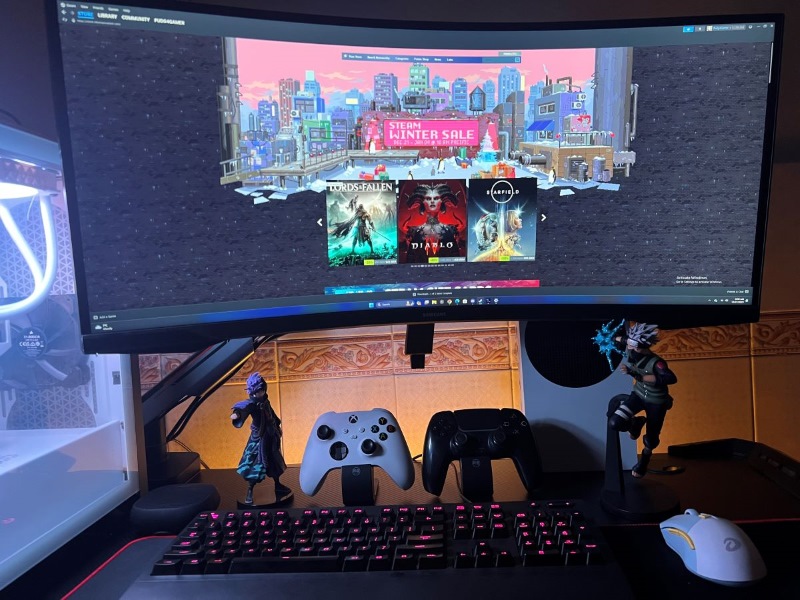
But, be mindful of the monitor’s resolution and refresh rate compatibility.
Sometimes, very high resolutions, like 4K, might not support high refresh rates due to limitations in how much data can be transferred at once.
3. A Graphics Card With the Capability To Handle 165Hz
Lastly, your graphics card should be powerful enough for whatever you’re doing, whether it’s gaming or watching high-quality videos, at a 165Hz refresh rate.
A graphics card like the RTX 3060Ti or a higher version, such as the RTX 4060Ti, is a great pick, especially for gaming.
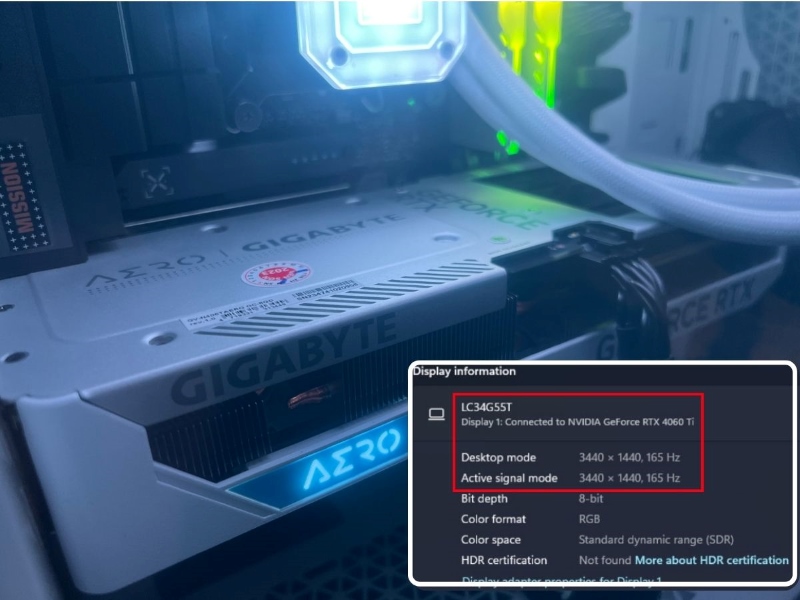
It’s also important to make sure that your graphics card’s output matches your monitor’s input options, like HDMI 2.1 or DisplayPort 1.4.
And don’t forget to keep your graphics card drivers up to date for the best performance and compatibility with high refresh rates.
How To Verify That Your PC Is Displaying Content at 165Hz
To confirm whether your computer is indeed displaying content at the super-fast 165Hz refresh rate, you can use one of the three methods below.
1. Check Display Settings
The first place to look is in your PC’s Display settings.
If you’re using Windows 10, go to ‘Settings‘, then ‘System‘, and click on ‘Display‘.
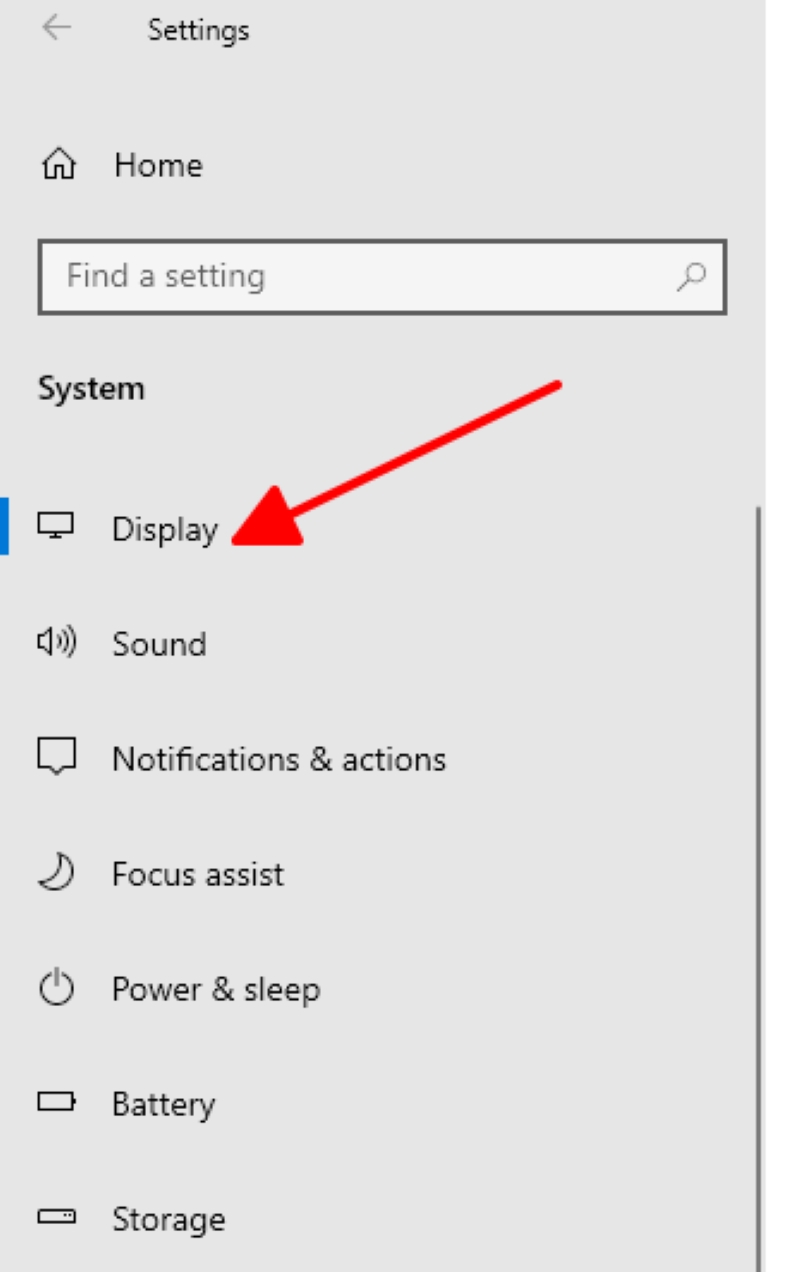
From there, click on ‘Advanced Display Settings‘ and then ‘Display Adapter Properties‘.
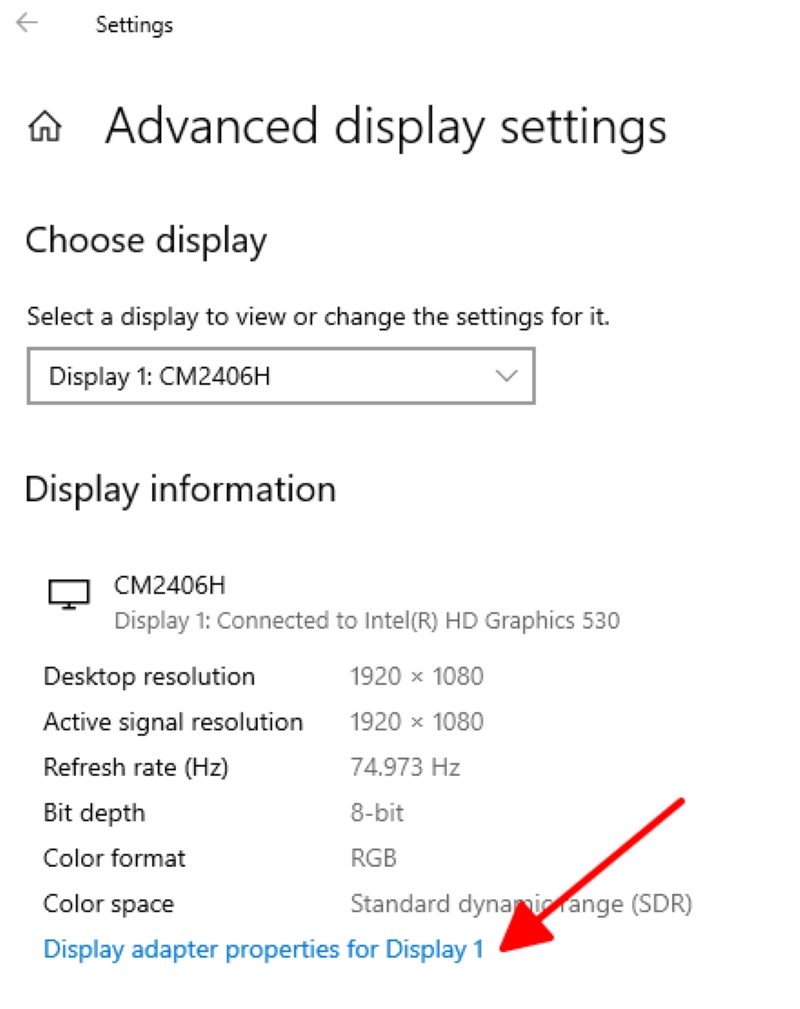
Under the ‘Monitor‘ tab, you’ll see the Screen Refresh Rate section.
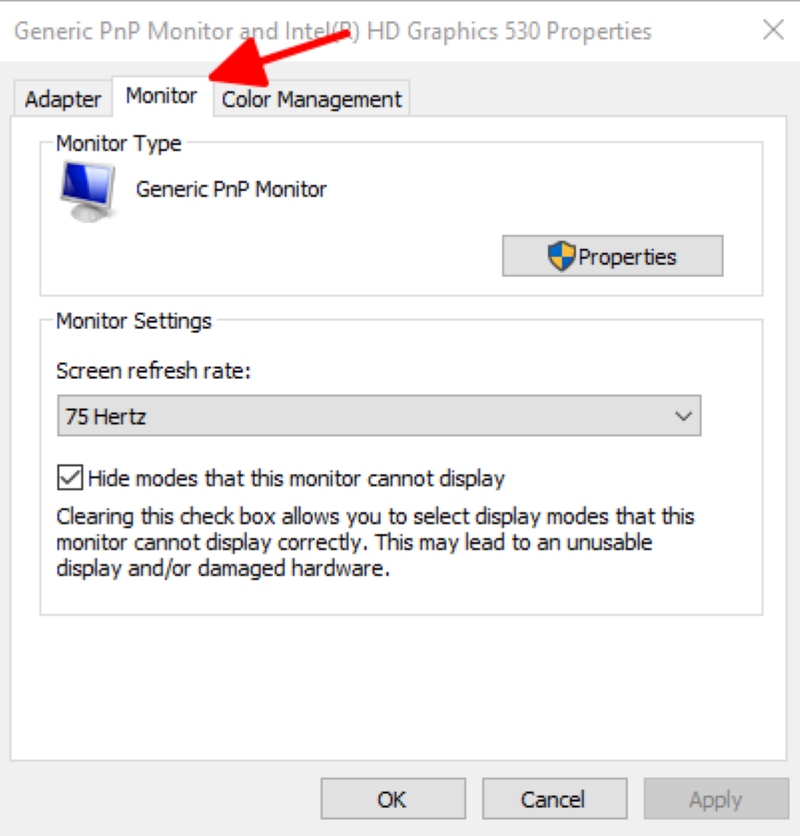
Look for the 165Hz option here.
For Windows 11 users, it’s a bit different.
Click on the Start menu and search for ‘Settings‘.
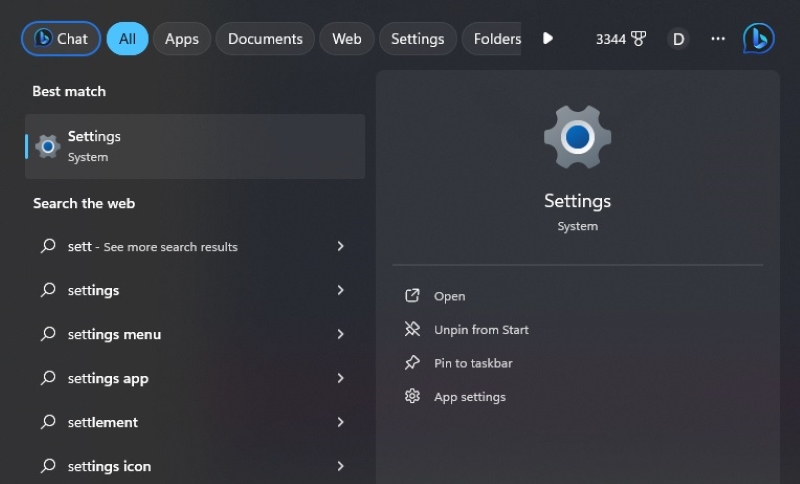
Then, click on ‘System‘, and go to ‘Display‘, followed by ‘Advanced display‘.

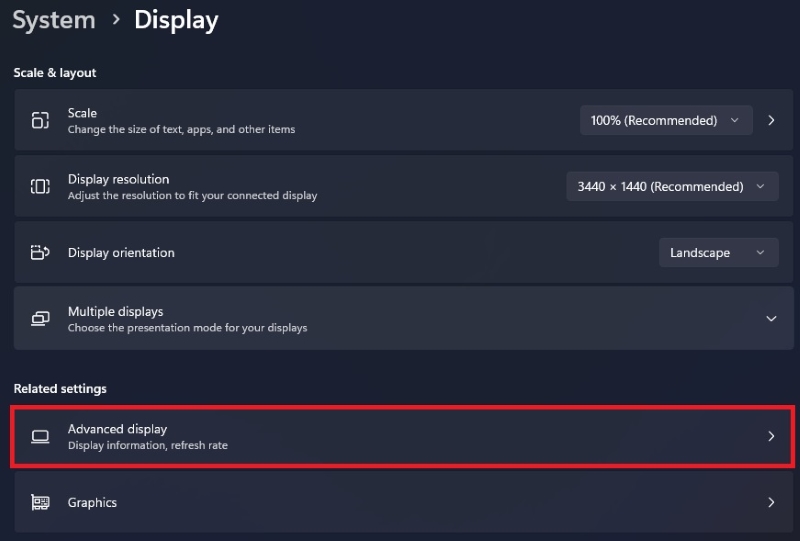
In the ‘Choose a refresh rate‘ dropdown, check if 165Hz is listed.
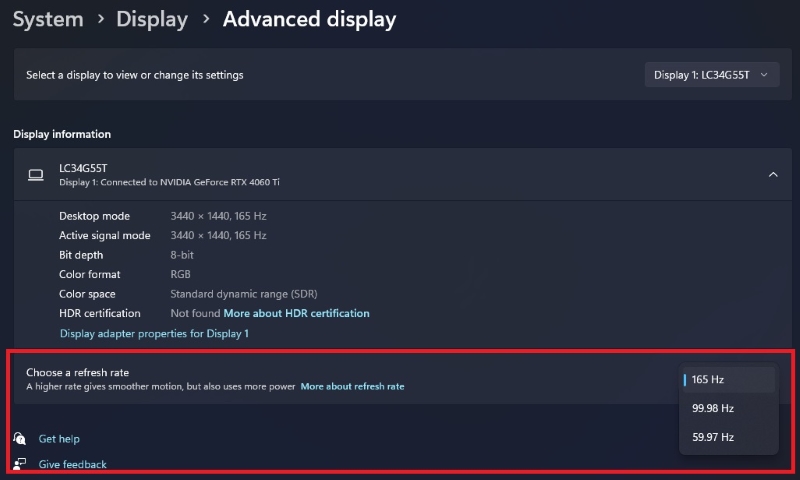
2. Check Graphics Card Settings
Your graphics card’s control panel is another great place to verify the refresh rate.
The specific steps can vary, so if you’re unsure, take a peek at your graphics card’s manual.
For example, if you have an NVIDIA graphics card, open the NVIDIA Control Panel.
Go to ‘Display‘, then ‘Change resolution‘.
Select the display you want to adjust, and then look in the ‘Refresh rate‘ dropdown to see if 165Hz is an option.
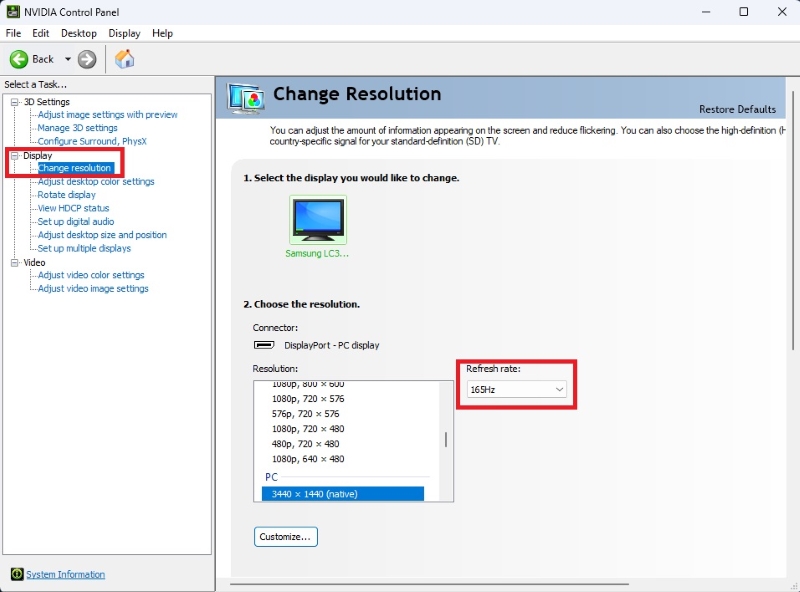
3. Check Your Monitor’s Information
Lastly, your monitor itself might provide the answer.
Many monitors can display their current operating mode, including the refresh rate, either through an on-screen display (OSD) menu or an overlay feature.
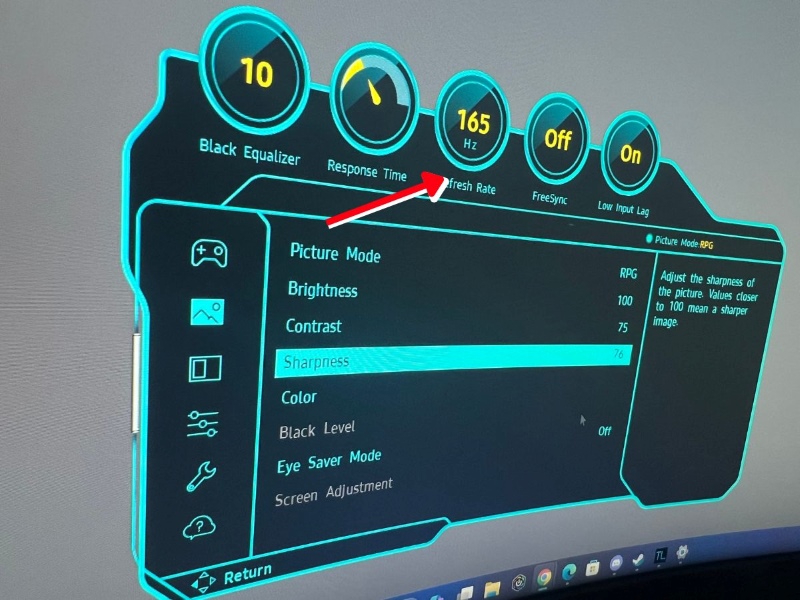
This is a straightforward way to see the current refresh rate in your PC setup.
Bonus: Does DisplayPort Support 165Hz?
Absolutely, DisplayPort is a great choice if you’re looking to enjoy content at a super-fast 165Hz refresh rate.
Just like HDMI, DisplayPort cables have different versions.
To get that awesome 165Hz refresh rate, you’ll need a DisplayPort cable that’s at least version 1.2 or newer.
These cables are designed to handle fast refresh rates, making sure your games and movies look incredibly smooth.
Meet Vance. He’s a proud dad, a seasoned Electronics Engineer, and an avid tech lover. His proficiency in electronics and troubleshooting skills were instrumental in crafting Pointer Clicker. Vance is passionate about simplifying tech for those who aren’t well-versed in it.



Excellent article, perfectly worded and enjoyable to read. Thank you.